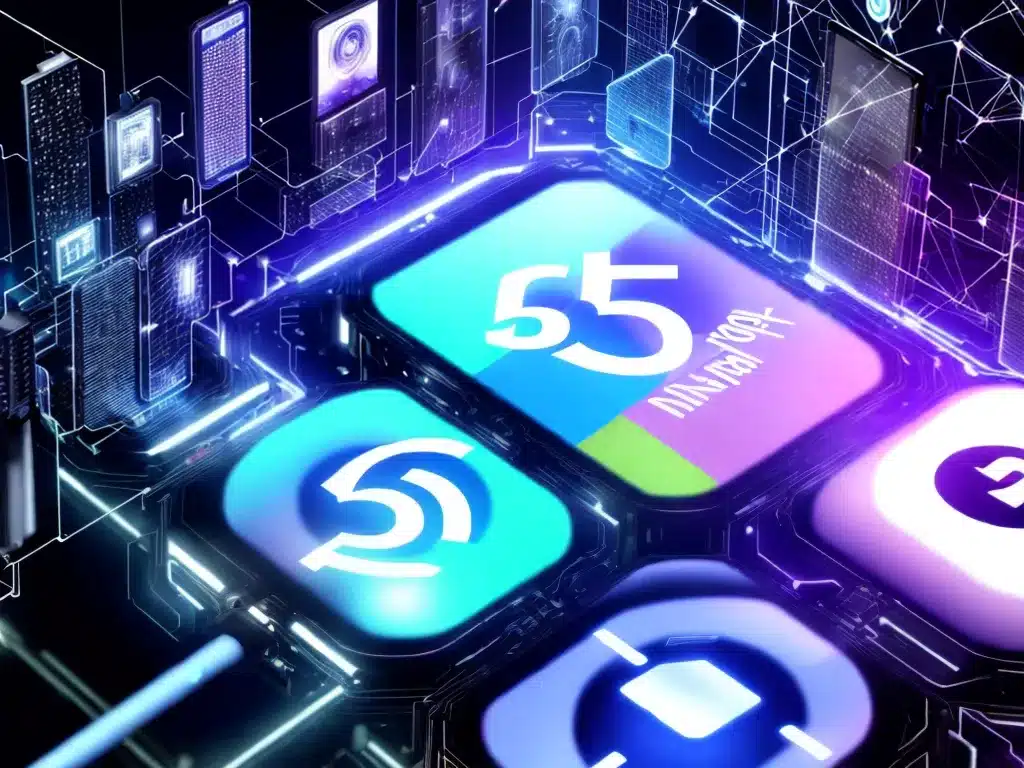
Introduction
The rollout of 5G networks is one of the most anticipated developments in the tech world. As someone who follows emerging technologies closely, I believe that 5G has the potential to truly be a game-changing technology that will enable new innovations across many industries.
In this in-depth article, I will cover the key capabilities of 5G networks, explain how 5G enables new technologies and use cases, and discuss the industries and applications that 5G will transform. My goal is to showcase why 5G is such a monumental leap forward compared to previous wireless generations.
The Capabilities of 5G Networks
To understand why 5G will have such a massive impact, we first need to understand what sets it apart from 3G and 4G networks. 5G delivers major improvements in three key areas:
Speed
5G delivers exponentially faster download and upload speeds compared to 4G LTE networks. 5G offers peak download speeds of 20 Gbps, compared to 1 Gbps peak downloads for 4G. On the upload side, 5G supports peak speeds of 10 Gbps, a massive upgrade from 4G’s max of 150 Mbps. Even at the lower end, 5G starts at 100 Mbps, while 4G networks only achieve 10-50 Mbps.
Latency
Latency refers to the time it takes for data to get from point A to point B over the network. 5G achieves single-digit millisecond latency (as low as 1ms), a 10x reduction compared to 4G’s typical 50-100ms latency. This near real-time responsiveness is critical for applications like self-driving cars and industrial automation.
Connectivity
5G will support up to 1 million device connections per square kilometer. This allows the Internet of Things revolution to reach massive scale by connecting billions of devices. 4G supports only about 100,000 connections per square kilometer.
With this powerful combination of high bandwidth, low latency, and expansive connectivity, 5G becomes a platform for innovation across every industry.
How 5G Enables New Use Cases and Technologies
The technical capabilities of 5G networks allow new technologies and applications that were previously not feasible or usable on 4G networks. Here are some examples:
Autonomous Vehicles
Self-driving cars need to transmit huge amounts of sensor data and communicatecritical driving instructions within milliseconds. 5G’s high bandwidth, low latency, and reliability supports full autonomous driving and vehicle-to-vehicle communication for the first time.
Industrial Automation
Smart factories with real-time control, autonomous robots, and AR/VR-assisted operations require very responsive, reliable wireless connectivity. With 5G’s speed, low latency, and ability to connect massive IoT devices, next-gen industrial automation becomes a reality.
Remote Healthcare
Healthcare providers can now remotely diagnose and assist patients in real-time using HD video, AI, and healthcare IoT devices enabled by 5G. These emerging telehealth applications vastly improve healthcare access and quality, especially in rural areas.
Immersive VR/AR
Virtual and augmented reality can now shine with 5G. Its high bandwidth supports 8K video streaming and enhanced VR/AR overlays, while low latency prevents lag and motion sickness. New PR and entertainment experiences become possible.
Smart Cities
5G allows thousands of high-bandwidth sensors across a city to connect and feed data into dynamic urban management systems. City infrastructure and services can then be optimized based on granular, real-time data on traffic patterns, public transport usage, waste management needs, etc.
Industries That 5G Will Transform
It’s clear that 5G will revolutionize numerous tech fields. But the impact goes beyond pure technology industries. Here are some of the many sectors that 5G is set to transform:
Media and Entertainment
5G will allow the media and entertainment world to stream ultra high-def 8K video content to millions of users simultaneously. Augmented and virtual reality will achieve mainstream adoption once they can operate seamlessly over 5G.
Energy
5G sensor networks across electric grids and pipelines will help better predict demand and prevent outages. Energy companies can closely monitor infrastructure and respond rapidly to issues for more resilience and efficiency.
Retail
Retailers will be able to offer hyper-personalized promotions and experiences by leveraging real-time data on customers’ locations and behaviors within large facilities like malls and stadiums.
Transportation
Beyond autonomous vehicles, 5G allows for smarter traffic coordination, public transport scheduling based on real-time crowds, and overhauls of port operations. The transportation sector will run far more smoothly and optimize capacity and throughput with 5G-enabled systems.
The Bottom Line
Within a few years, 5G’s lightning fast speeds, extremely low latency, and ability to connect billions of devices will fundamentally alter what’s possible. When combined with cloud computing, artificial intelligence, advanced sensors, and more, 5G becomes the backbone of a world with autonomous everything, virtual environments, and ubiquitous AI. The pace of digitization and automation across industries will rapidly accelerate. While the full impacts will take time to play out, we are truly embarking into a hyper-connected world with the rollout of 5G networks.












